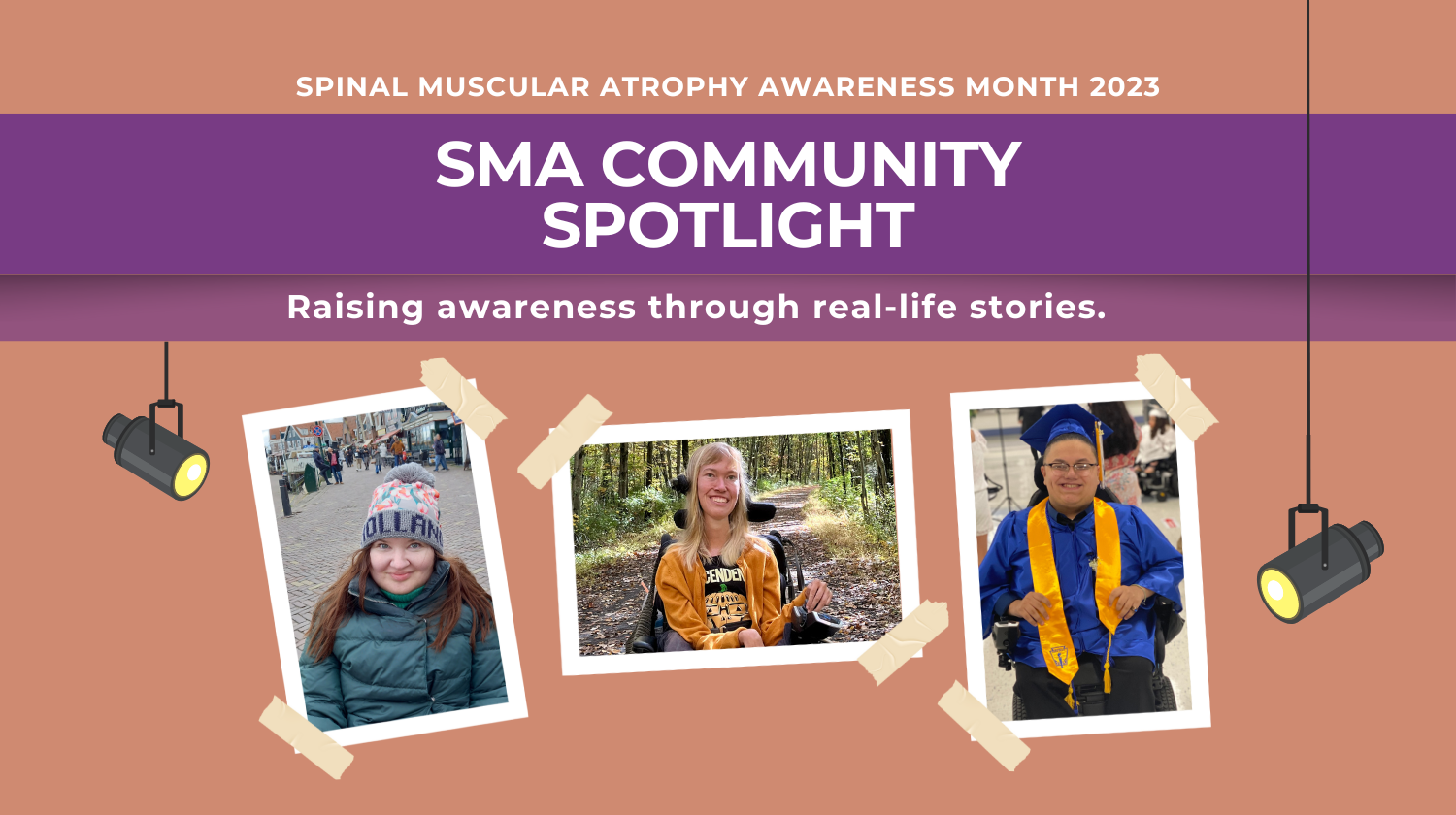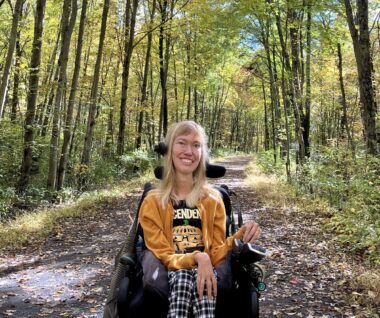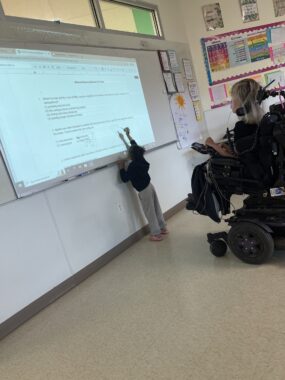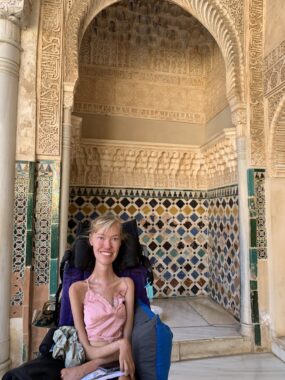The classroom is the ‘one place where I don’t feel disabled’
Written by |


Eloise Pillarella enjoys an accessible hike through an autumn forest during a visit back to New Paltz, New York, her college town. (Courtesy of Eloise Pillarella)
This is Eloise Pillarella’s story:
Being a high school science teacher with spinal muscular atrophy has taught me much about the world and helped me develop my identity as a person outside my disability. I became interested in teaching during high school, when I volunteered at an elementary school tutoring program. Helping first-graders develop their reading skills was what I looked forward to the most each week. I attended college at SUNY New Paltz in New York and majored in elementary education with a concentration in biology. College was a really magical time because, with the help of personal care attendants, I was able to live on my own and have a level of freedom and independence I never had before.
I worked in elementary schools for my fieldwork and student teaching. I loved teaching younger children, but realized I was better suited for teenagers. I got hired as a teaching assistant at a middle/high school charter school after graduation and was hired as a full-time science teacher the next year.

Eloise Pillarella’s niece, Daisy, leads a lesson on how to draw a dog during a visit to Pillarella’s classroom. (Courtesy of Eloise Pillarella)
My school is a great fit because the classrooms follow an inclusion model, with about 40% of the students having some type of disability and a teaching assistant in every classroom. With the assistant and students helping with some tasks, I’m free to design creative lessons, differentiate material for my students, contact parents, handle administrative tasks, and teach. My classroom is the one place where I don’t feel disabled. While obstacles and access barriers pop up, the focus is always on teaching and learning, something I look forward to every day.
My kids appreciate that I show up as my authentic self each day. I model for them that I’m comfortable asking for help, being in my own skin, and finding creative ways to get things accomplished. Since most are minorities, have disabilities, or are from low socioeconomic backgrounds, it brings me joy to get them to rethink what a “real” teacher or professional should look like and I hope it helps them imagine possibilities for their own lives.

Eloise Pillarella stops at a castle in Grenada, Spain, during a trip to Europe. (Courtesy of Eloise Pillarella)
Being disabled gives me much freedom as a teacher. The best part of my job is helping my students realize their natural curiosity about the world. When I see them getting excited about giving caffeine to tiny shrimp to increase their heart rate and watch their hearts beat under the microscope, it’s the best feeling in the world. Yes, I deal with my share of behavior problems, student apathy, and disinterest, just like any teacher. But I push through the grueling, tedious, and disappointing parts of the job to be there for the kids even when I don’t feel like it. The SMA community has been a big support for me throughout my career. Seeing other adults with SMA thrive has helped me find solutions to daily problems and build my confidence in my professional abilities. I’m so glad to be a part of this amazing community and to share my story.
In recognition of Spinal Muscular Atrophy Awareness Month in August, the SMA Community Spotlight campaign features a series of stories highlighting the real-life experiences of people affected by SMA, written in their own words. Follow us on Facebook and Instagram for more stories like this, using the hashtag #SMASpotlight, or read the full series.






